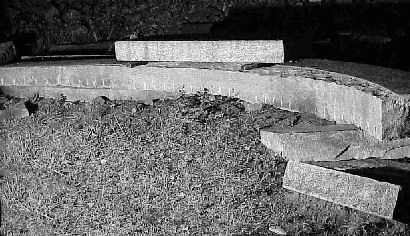|
Sitting Just Adjacent To
Wellesley Island
Oak Island
George Boldt owned ‘Oak Island’, which is located ten miles down river from Heart Island. From the stone quarries on Oak Island, Mr. Boldt employed more than 150 men in the operations involved with quarrying the huge granite blocks which were used to build Boldt Castle. He also used his own sand pits to dig out tons of sand which were used in mixing the mortar.
The head stone cutter directed the cutting of stone to close specifications as he followed the plans for the castle. Each stone bore its own mark, designating its use and placement, and so well was the work done that after being cut, and towed by boat to the construction site, it is said that not one of the stones needed any alterations. The photograph above is the top stair in a flight leading to the basement level, and bears witness to the close tolerances made by only the most skilled of stone masons.
The granite slabs were hoisted up out of the 15 to 20 feet deep pit by steam derricks and then placed on small flat cars. The quarry was equipped with a narrow railroad, to aid in loading and moving the heavy stone blocks.
The flat cars were pulled by horse to the finishing sheds and then to the docks where they were placed on scows and towed upriver by Mr. Boldt’s own steam tug ‘Queen’ (shown above) to Heart Island.
The cut pieces of granite measured 8 feet by 14 feet by 8 inches, and slabs were cut 20 feet long for steps.
Once at Heart Island, the slabs were loaded into other small flat cars, which rode on railroad tracks too. The photograph above shows a part of the old foundation on which railroad tracks were built to aid in transporting the large, heavy granite stones.
The stones were cut by drilling holes into the face of the stone, and inserting wedges which, when struck by a hammer, would open up and seperate the block into manageable slabs which would then be chiseled to the proper dimensions. This photograph shows remaing ‘scars’ of the original work. The holes in the stones were the drilled holes, and if you look carefully you can see the scar of where the wedges seperated the layers of stone apart.
|
||||||||||||||


















Leave a comment